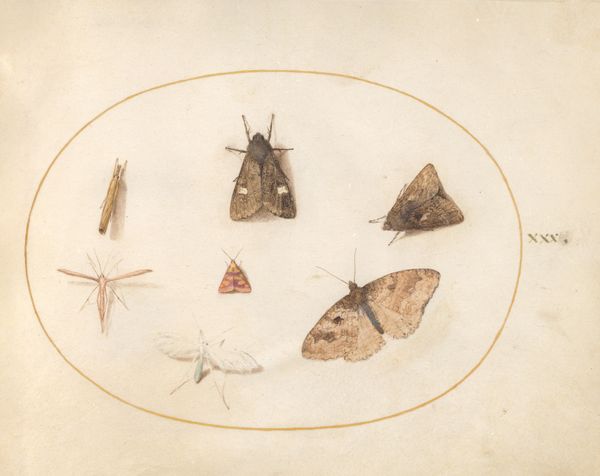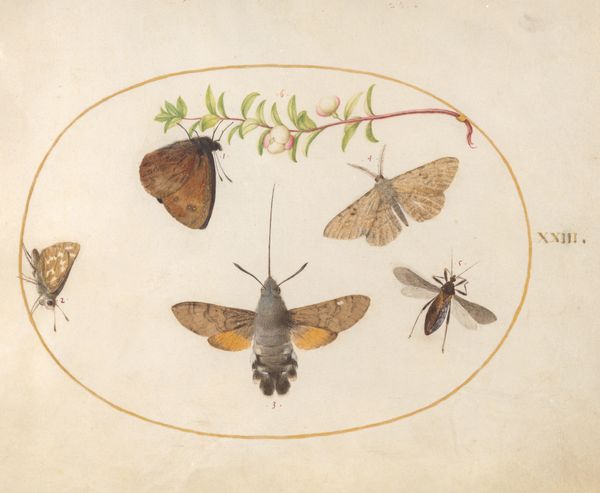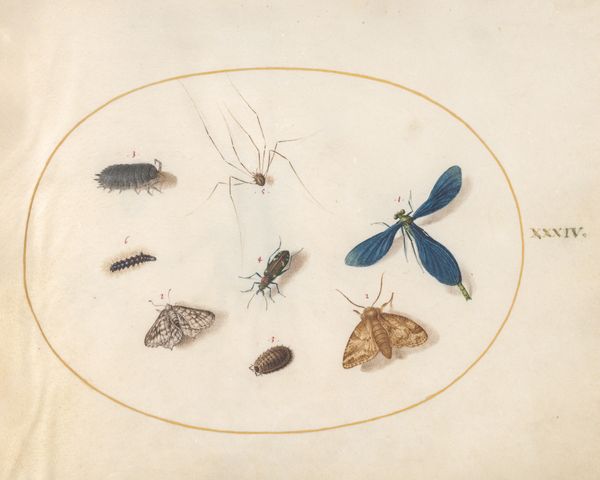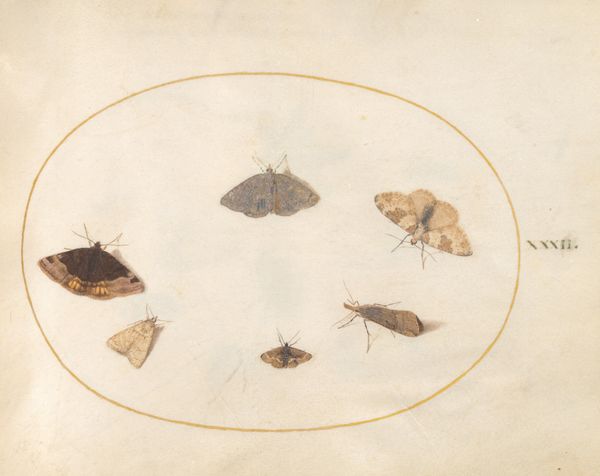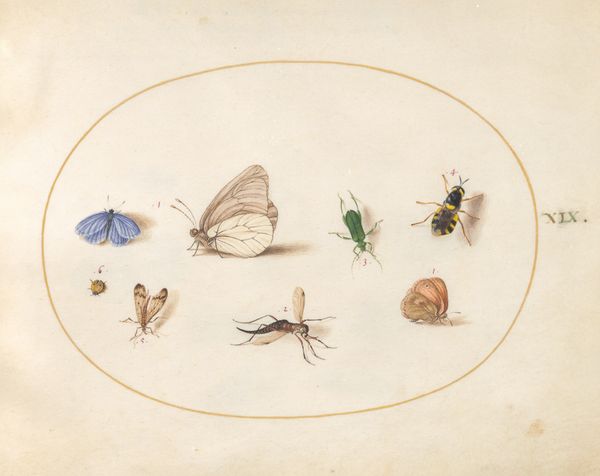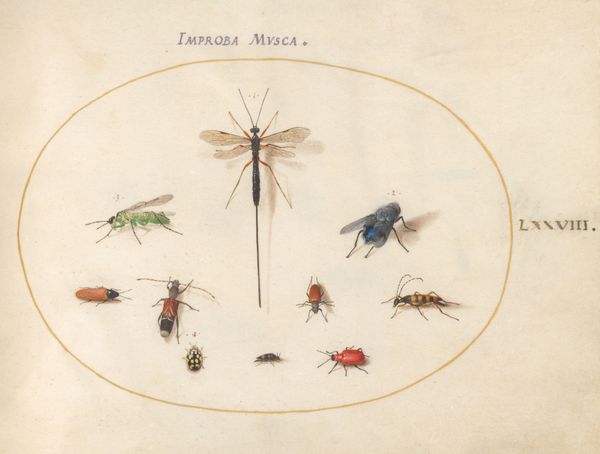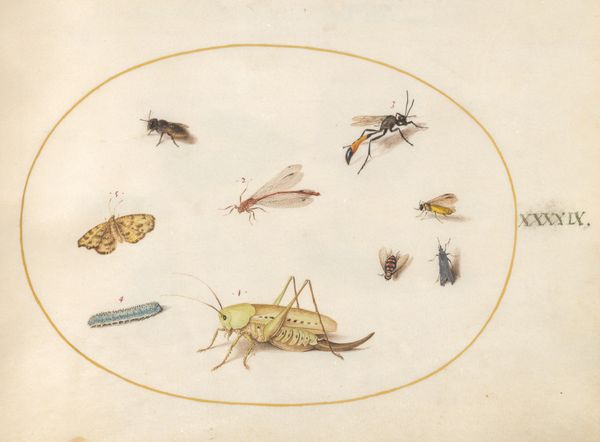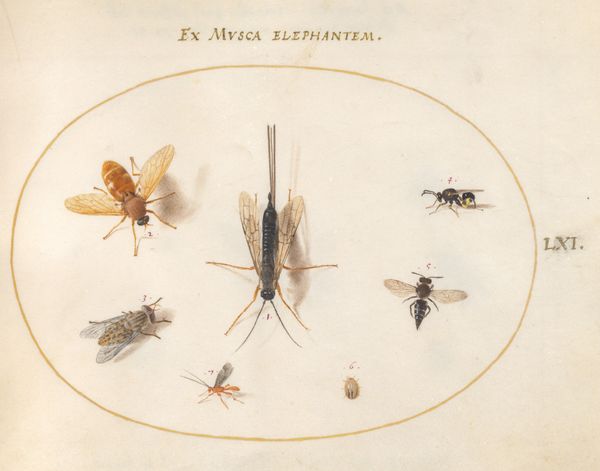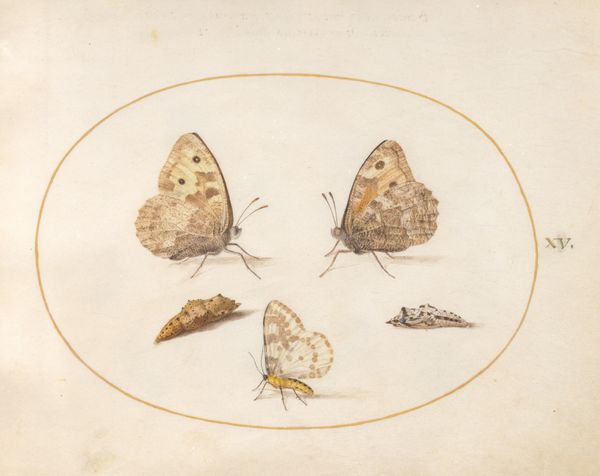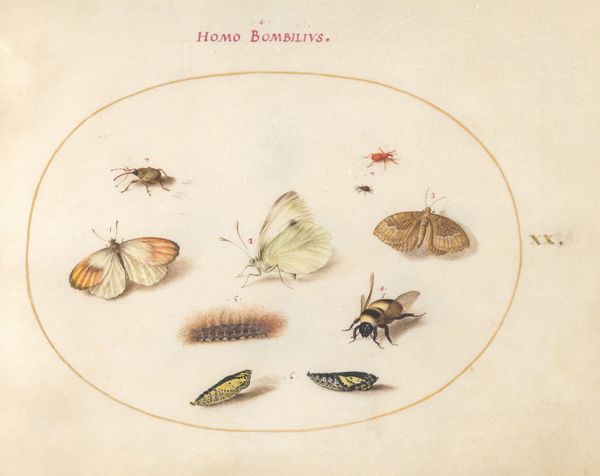
drawing, watercolor
#
drawing
#
mannerism
#
watercolor
#
watercolor
Dimensions: page size (approximate): 14.3 x 18.4 cm (5 5/8 x 7 1/4 in.)
Copyright: National Gallery of Art: CC0 1.0
Curator: Joris Hoefnagel's "Plate 31: Seven Moths" created around 1575 to 1580, a delicate watercolor drawing, feels strangely melancholic, doesn't it? Editor: Absolutely. My first impression is that there is a vulnerability to them all, an exposure within their meticulously rendered details, suspended inside that delicate gold frame. Is this frame simply to offer a focused presentation of different moths and perhaps the study of entymology? Curator: Hoefnagel's work often explored the intersection of art and science, fitting the Mannerist style, this image seems both decorative and intensely observant. Think about this plate belonging to a natural history illustration, to demonstrate the artist’s attention to detail when depicting natural life! Editor: Right. What's interesting is that even in a seemingly objective, scientific study, there's a subtle commentary on the 'natural order.' The moths, gathered, centered—yet "Tineas pascere miservm," that title reminds us that moths may feel and face wretchedness when serving as someone's "food." Are the moths standing as metaphors, allegories for social precarity? Curator: The inscription "Tineas pascere miserum"—loosely translated to “Wretched moths as food”—really hits differently when considered like that. Makes you think about fragility of beauty and transience, a Vanitas-like commentary... I can’t unsee this! Editor: The level of detail on each moth, juxtaposed with this acknowledgement of the brevity and brutality, becomes really poignant. I believe it reveals the ecological violence that can permeate systems, then and now. And it makes me question whose perspective of wretchedness it is presenting: The food for humans? Curator: Perspective is everything. In rendering them so delicately, with such precise care, isn't he acknowledging their inherent value beyond being merely "food?" What a layered paradox this is! Editor: Agreed. It reminds me that even the smallest, most easily dismissed creatures can be symbols, loaded with narratives of power and survival. Perhaps a good place to start to find a different balance... Curator: Well, from a scientific record to a surprisingly potent reminder of ecological justice... it seems like this unassuming "Plate 31: Seven Moths" offers quite a bit to consider!
Comments
No comments
Be the first to comment and join the conversation on the ultimate creative platform.
